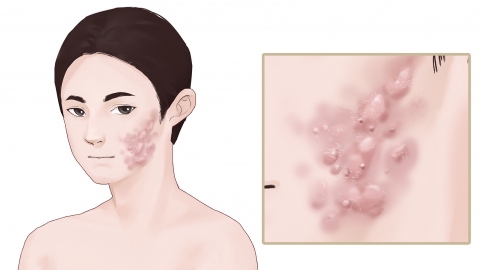Why do scabies develop?
Scabies is a contagious skin disease caused by the parasitism of Sarcoptes scabiei mites in the epidermal layer of human skin. It may be triggered by factors such as weakened skin barrier function, poor hygiene conditions, direct contact infection, indirect contact infection, concurrent infection due to low immunity, or secondary bacterial infection. If abnormalities occur, timely medical consultation is recommended. Specific analyses are as follows:

1. Weakened Skin Barrier Function: Individuals with naturally thin stratum corneum and reduced sebum secretion have insufficient protective barrier function, making it easier for scabies mites to penetrate the skin and increase the risk of scabies infection. Daily attention should be paid to skin moisturization, using mild skin emollients to enhance barrier function and reduce opportunities for mite invasion.
2. Poor Hygiene Conditions: Infrequent bathing and untimely cleaning of clothes and bedding can easily lead to mite proliferation and provide a breeding environment, resulting in scabies infection. It is important to develop habits of frequent bathing and changing clothes, regularly washing and sun-drying bedding, and maintaining a clean and dry living environment.
3. Direct Contact Infection: Close contact with scabies patients, such as hugging or sharing beds, allows mites to transfer directly through the skin, causing infection accompanied by severe skin itching that worsens at night. Patients should follow medical advice to apply topical medications such as sulfur ointment, lindane cream, or crotamiton cream, and apply them over the entire body according to the prescribed course of treatment.
4. Indirect Contact Infection: Contact with contaminated items such as clothing, bedding, or towels allows mites to invade the skin indirectly, leading to infection accompanied by skin itching and rashes. Doctors may recommend topical applications of benzyl benzoate lotion, clove basil oil cream, or centipede and Indigo Naturalis ointment, while thoroughly disinfecting contaminated objects.
5. Concurrent Infection Due to Low Immunity: Patients suffering from diseases such as AIDS or diabetes, which lead to compromised immunity, are prone to massive mite proliferation after infestation, causing severe scabies accompanied by extensive rashes, crusting, and intense itching. Doctors may prescribe topical sulfur ointment combined with oral administration of ivermectin tablets or thymopeptide enteric-coated tablets to enhance immunity and eliminate scabies mites.
In daily life, close contact with scabies patients should be avoided, and personal items should not be shared. During treatment, clothing and bedding should be washed with boiling water and sun-dried. Family members or close contacts should also undergo examination and treatment simultaneously.





